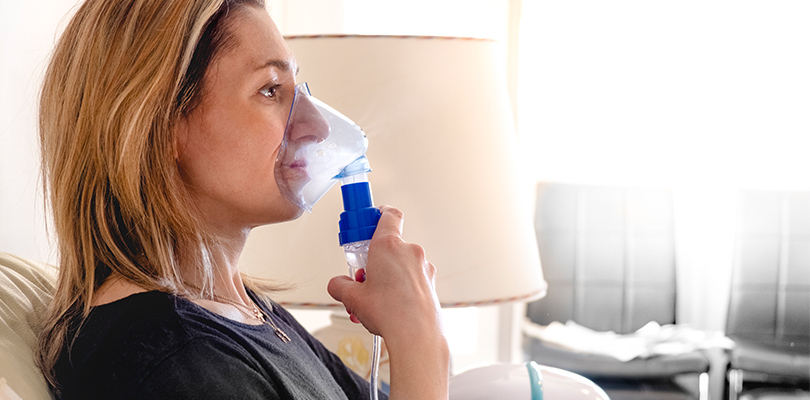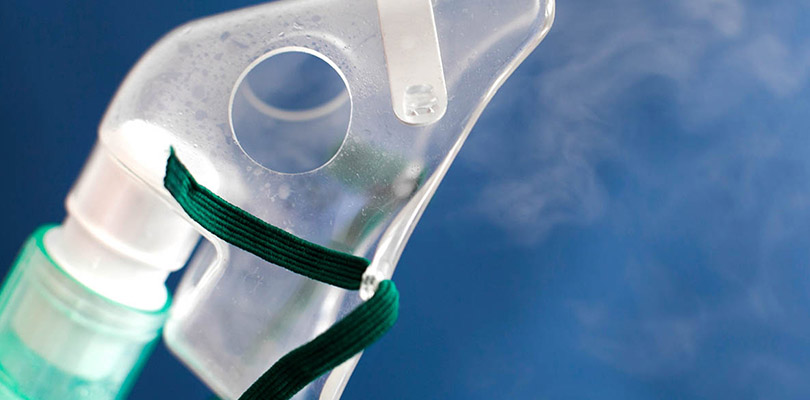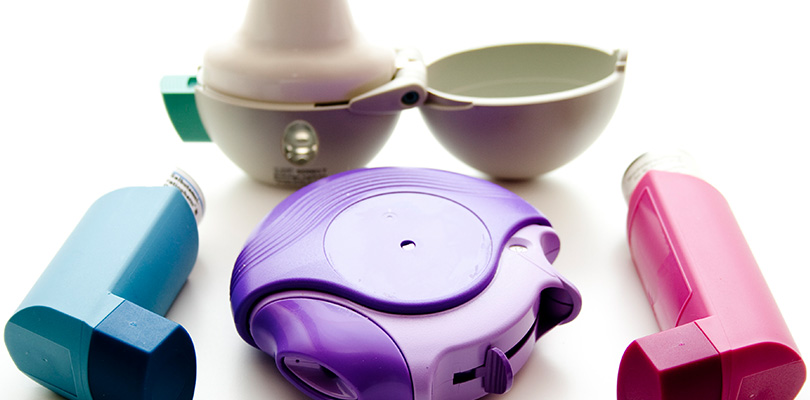Nebulizer for COPD
Treatment for chronic obstructive pulmonary disease (COPD) often includes medication, such as bronchodilators. Bronchodilators decrease sudden symptoms of COPD, such as wheezing, shortness of breath and chest tightness.
Common drugs used include albuterol, Atrovent and Xopenex. Medications for COPD, including bronchodilators, are administrable through a nebulizer.
What Is a Nebulizer for COPD?
A nebulizer is a small medical device that changes liquid medication into a mist, which you inhale through a mouthpiece or a face mask. Inhaling medication allows it to be delivered directly into the lungs. The therapeutic effects of the medication are often felt quicker than if a drug was given orally.
Nebulizers are made by different manufacturers, but they all have similar parts. A nebulizer has a medication cup where you place the liquid. It also consists of a mask or mouthpiece to inhale the medication through. Tubing connects the nebulizer to a small air compressor.
Most nebulizers plug into an electrical outlet, but there are also air compressors that are battery operated. It takes about 10 minutes to complete a breathing treatment; however, it can take longer depending on the dose of medication.
Nebulizer vs. Inhaler
Respiratory medications, including bronchodilators and corticosteroids, come in different forms and can be taken through a nebulizer or an inhaler. Although it is the same medication, the delivery device is different.
There are different types of inhalers, including a metered-dose inhaler, dry powder inhaler and slow mist inhaler. Each one may require a different inhalation strength.
Metered-dose inhalers are comprised of a pressurized canister that contains medication. When you press the canister, it delivers a fix-measured dose of medicine. Dry powdered inhalers deliver a set dose of powdered medication. Medication is delivered in aerosol form when using a slow mist inhaler.
Nebulizers and inhalers can both administer the same type of medications, which includes bronchodilators and steroids. Nebulizers can also deliver sterile saline and some types of antibiotics.
Both devices have their shortcomings and advantages. For instance, an MDI is faster —it only takes a minute to use an inhaler as opposed to 10 minutes with a nebulizer. An MDI is also more portable, which makes it easy to carry with you when you are out.
On the other hand a nebulizer is often easier to use. When using an MDI, you need to coordinate your inhalation with the release of the medication, which can be difficult for some people. Using a spacer with an MDI helps, but there is still more room for user error with an MDI.
Studies have shown that medication is just as effective when using an inhaler versus a nebulizer. However, in some cases, such as if a person with COPD is unable to use an inhaler correctly, a nebulizer would be the better option.
How Do Nebulizers for COPD Work?
Nebulizers for COPD require an air source to deliver pressurized air to turn the liquid into a mist. The pressurized air source can be either an oxygen tank or more commonly an air compressor.
If you are using an air compressor, it requires a power source to turn on. Depending on the specific compressor, it might be powered by electricity or a battery. The flow of pressured air through the device changes the liquid into a mist.
The air compressors used for nebulizers have an on and off switch. The flow of air is preset and is not adjustable. If you are using an oxygen tank to run a nebulizer, you may need a certain liter flow per minute to generate the mist. The exact liter flow needed may vary depending on the device.
How to Use a Nebulizer for COPD
Chronic bronchitis is bronchitis that lingers and gets worse over time. Oxygen therapy for chronic bronchitis can help the symptoms. Here's how.
Nebulizers are easy to use and work similarly, even if they are designed slightly different. Respiratory medications are available through a doctor’s prescription. Follow the steps below to use a nebulizer.
- Wash your hands before handling the nebulizer or medication.
- Twist off the top of the medication cup. Place the prescribed dose of medication into the medication cup and place the top piece of the medication cup back on.
- Attach the tubing to the machine on one end and the nebulizer on the other.
- Turn the air compressor on, which will start the mist.
- Place the mouthpiece in your mouth and inhale slowly through your mouth.
- A mask can be used instead if someone is unable to hold the mouthpiece.
- When all the liquid medication is gone, the treatment is completed.
Keep the medication cup upright when using the nebulizer to help deliver all the medication. Both the nebulizer and air compressor need to be replaced at varied times. Nebulizers need to be replaced much more frequently than the air compressor. Follow the manufacturer’s recommendation on how often to replace the nebulizer and how to clean it.
If you have any concerns about how to use the nebulizer, call your durable medical equipment company that provided the equipment, or your doctor.
Both inhalers and nebulizers are effective ways to take respiratory medications. In fact, both devices can have a role in a COPD treatment plan.
If you feel one device works better than the other, continue to use that method. In other cases, if you have not been using a nebulizer and feel you are not getting relief from your inhalers, talk with your doctor about using a nebulizer.







